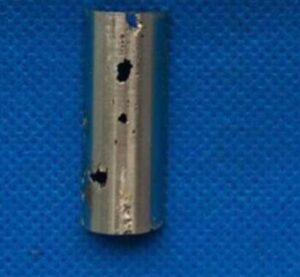Stainless Steel Point Corrosion
1 What is stainless steel point corrosion?
The excellent corrosion resistance of stainless steel is due to the formation of an invisible oxide film on the surface of the steel, making it blunt. The passivation film is formed as a result of the reaction of the steel with oxygen when exposed to the atmosphere, or as a result of contact with other oxygenated environments. If the passivation film is damaged, the stainless steel will continue to corrode. In many cases, the passivation film is broken only locally on the surface of the metal, and the effect of the corrosion is to form small holes or pits that produce small, irregularly distributed pitting-like corrosion on the surface of the material.
2 What cause stainless steel point corrosion?
Point corrosion is most likely due to the presence of chloride ions that have been chemically synthesized with depolarizing agents. Point corrosion of passivated metals such as stainless steel often results from localized damage to the passivated film by certain aggressive anions. Protecting passivated states with high corrosion resistance usually requires an oxidizing environment, but this is precisely the condition in which pitting occurs. The medium of pitting is a solution of chloride containing heavy metal ions such as Fe3+, Cu2+, Hg2+ in CI-, Br-, l-, C104- solutions or Na+, Ca2+ bases and alkaline earth metal ions containing H2O2, O2 etc.
The rate of point corrosion increases with temperature. For example, in solutions with concentrations of 4% to 10% NaCl, pitting at 90°C causes the greatest weight loss; for more dilute solutions, the maximum occurs at higher temperatures.
3 How to avoid stainless steel point corrosion?
Methods to prevent corrosion of stainless steel points
(1)avoid halogen ion concentration.
(2)Ensure the homogeneity of oxygen or oxidizing solution, stir the solution and avoid the solution is static.
(3)Increasing the concentration of oxygen, or removing oxygen.
(4)Increase the PH value. A significantly alkaline chloride solution causes less pitting than a neutral or acidic chloride, or none at all (hydroxide ions act as corrosion inhibitors).
(5)Work at the lowest possible temperature.
(6)Add passivation agent to corrosive medium. Low concentrations of nitrates or chromates are effective in many media (inhibiting ions from preferentially adsorbing to the metal surface, thus preventing chloride ions from adsorbing and causing corrosion).
(7) Use cathodic corrosion. There is evidence that stainless steel cathodically protected with mild steel, aluminium or zinc will not cause pitting in seawater.
Austenitic stainless steel containing molybdenum 2% to 4% has good pitting resistance. The use of molybdenum-containing austenitic stainless steels can significantly reduce pitting or general corrosion with corrosive media such as sodium chloride solutions, seawater, sulfite, sulfuric acid, phosphoric acid and formic acid.



